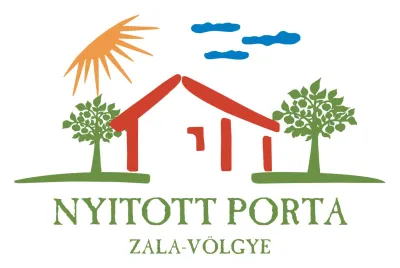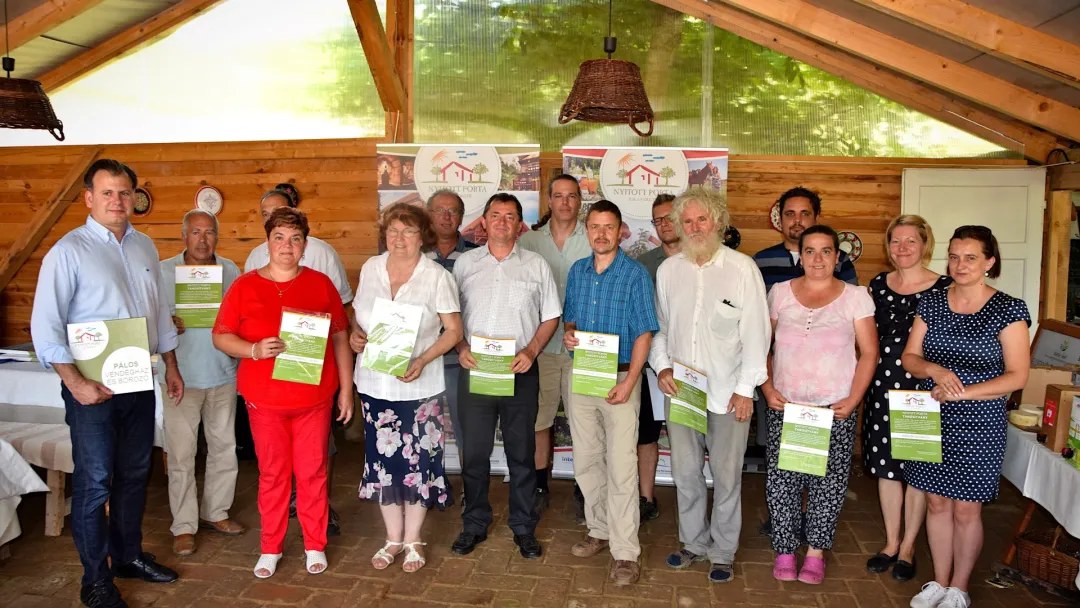General information
RDP Priority
- P6. Social inclusion and local development
RDP Focus Area
- 6B: Local development
RDP Measure
- M19: LEADER/CLLD
Beneficiary type
- Local Action Group
Summary
The Zala Valley Open Farms Network is a regional cooperation involving 36 farmers, producers and agrotourism service providers in the north-eastern part of Zala county, near the town of Zalaszentgrót. With support from the Zala Thermal Valley Association Local Action Group and LEADER, Network members deliver an annual programme of events and experiences, and can receive support to implement additional projects related to communication, the acquisition of equipment, organising events, workshops for skills development, etc.
The motivation for establishing the Open Farms Programme was the desire to create a local economic development model that would improve the visibility and profitability of local businesses and take advantage of the opportunities inherent in cooperation.
Results
- The initially 16-member network has now grown to 36, and the Zala Valley Open Farms Network has now become a nationally and internationally known good practice example. The initiative has been continuously developed since 2018.
- A Horizon 2020 research project, that ended in 2023, examined the Open Farms Network as a cooperation model leading to social innovation using the SROI (Social Return on Investment) method. SROI results showed that investment in the Zala Valley Open Farms Network has a 423% return for individuals, communities and society in terms of welfare impacts for many stakeholders, including farmers.

Promoter
Zala Thermal Valley Association
Funding
Total project budget: 124 000 (EUR)
EAFRD: 92 800 (EUR)
National/Regional: 23 200 (EUR)
Private/own: 8 000 (EUR)
Context
The Open Farms Network initiative was launched in 2018 in the area of the Zala Thermal Valley Local Action Group (LAG) in Western Hungary. The Zala Thermal Valley LAG is a non-profit rural development association founded in 2008. The association’s membership includes 101 municipalities, businesses, civil organisations and private individuals. Its territory covers 30 settlements in the Zala Valley, consisting mostly of small villages. These villages face high unemployment rates, poor public transport, and a significant decline in industrial production. The nation’s main motorways and railways only cross the fringes of the region, limiting connectivity.
The Open Farms Network initiative was inspired by the French initiative ’Bienvenue à la ferme’, which the LAG management became acquainted with during a study trip in 2015. Between 2015 and 2018, the project underwent thorough preparation, with the LAG establishing rules and regulations; designing the initiative’s first website and logo; organising workshops and study tours; and publishing materials to promote the programme. In 2018, the Open Farms Network programme was launched, and the first events and visits were organised.
Objectives
The Open Farms Network initiative is closely related to the local development strategy of the LAG, and aims to:
- strengthen economic activity for local farmers and entrepreneurs and increase their income, thus creating a stable and predictable vision for the future.
- diversify and improve the quality of the region's product and service offerings.
- strengthen the local community through networking and cooperation, not only for entrepreneurs, but for all local residents and actors.
Activities
Starting from 1 September 2018, the local producers, farmers and agritourism service providers of the LAG territory set up the network and started regular announcements about the open days and events for guests visiting the farms. The key feature of this Network is that the members actively cooperate with each other. In recent years, several projects have been implemented to support network activities and to strengthen cooperation between members, both by regional civil organisations and by the Zala Thermal Valley Association.
In connection with the Open Farms Network, current and future members can receive support from LEADER sources (assuming that they become members after the completion of the given project), and complex network projects have also been implemented. Between 2018-2023, 37 individual support decisions were made, for a total amount of EUR 370 000. The support received could be spent, for example, on the purchase of equipment, the creation of a place to receive guests, the purchase of machinery, etc. In the same period, eight network projects were implemented, for the amount of EUR 116 000. Indicatively, activities of these eight projects included:
- organising marketing activities, such as press conferences, social media campaigns, flyers, publications and the creation of labelled merchandise to promote the Open Farms Network offer.
- organising seven Contact Building Club meetings at seven Open Farms to strengthen cooperation with neighbouring farms.
- conducting mentoring visits by a Short Supply Chain mentor at 32 Open Farms three times over two years. This activity aimed to help each farm’s development in an individualised way and encourage cooperation within the network.
- organising 24 tourist sign painting events at 24 Open Farms. As a result of the events, Open Farm Network members are better able to understand and appreciate the significance of the pedestrian tourist routes in their surroundings, and, in the future, will be better able to attract pedestrians to their events. One of the results of the project was the renovation of more than 200 kilometres of pedestrian tourist trail signs in the Zala Valley.
- 21 Open Farms jointly acquired low-value equipment related to hosting guests, namely catering and communications equipment. Each farm purchased equipment for itself, but a common list was used, and they all received advice from the project manager who helped with the project implementation.
- organising 12 educational lectures for Open Farms and local producers on marketing, communication, business skills, and working in partnership.
Main results
- The number of members has increased from 16, in 2018, to 36, and the Network has successfully established a community based on mutual trust. The members meet each other regularly, recommend each other to their guests, often buy each other's products and services, and there are joint programme packages and unique collaborations.
- The network encourages its members to increase their social activity and improve the quality of their offer. Recently, the quality assurance system was completed, and this will help the members assess their level every year according to a label classification based on specific criteria. This will guide them to identify where improvement and further development are needed.
- In the seventh year of operation, it can be said that the Open Farms Network has become a successful local economic development model in an otherwise disadvantaged inner-periphery area. The popularity, profitability, and diversification of the network member farms increased, and the Open Farms programme became a well-known factor in the tourist offer in the region.
- A Horizon 2020 research project that ended in 2023 examined the Open Farms Network as a cooperation model for boosting social innovation using the SROI (Social Return on Investment) method. SROI results showed that investment in the Zala Valley Open Farms Network has a 423% return for individuals, communities and society in terms of welfare impacts for many stakeholders, including farmers. Over the five-year payback period, the total return for every euro invested was EUR 4.23, with improvements in health, well-being and a range of social and relational well-being factors as a result of participation in the network and the opportunities it provides.
Key lessons
- The Open Farms Network cooperation brings not only economic but also social benefits for farmers. While economic benefits are easier to measure, the significant welfare benefits to network members remain elusive and often hidden. Often, the members themselves and supporters do not even realise how much of a change they have generated in the farmers' lives.
- In the past 15 years, it was the only development that had a meaningful impact on the region as a whole. The development resource used was insignificant compared to the effect it achieved. It is therefore worth getting involved if someone feels committed and finds themself and their team capable of implementing a multi-year project. However, without LEADER support and the background work and assistance of the LAG management, the model would unfortunately not be able to function on a market basis alone.
From a technical point of view, the project for purchasing equipment implied an unrealistically large administrative burden. The involved network members, the project manager, and the administrative staff of the Government Office say that they would never again implement such a project. Within the framework of the project, more than 200 low-value devices were purchased, and the documentation required was the same as that for purchasing a tractor worth hundreds of thousands of euros.
Tibor Szabó

